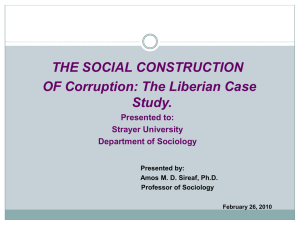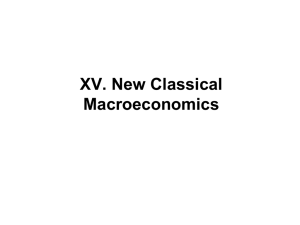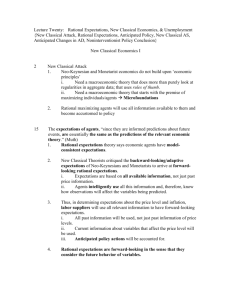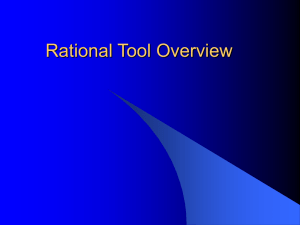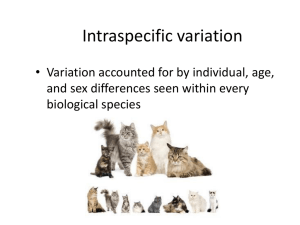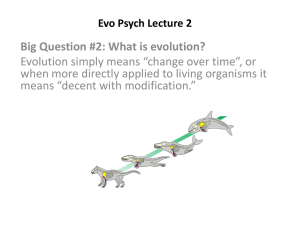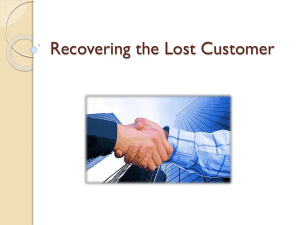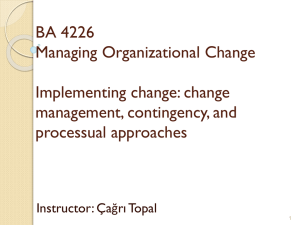What is strategy and what does it matter? - sitacs
advertisement
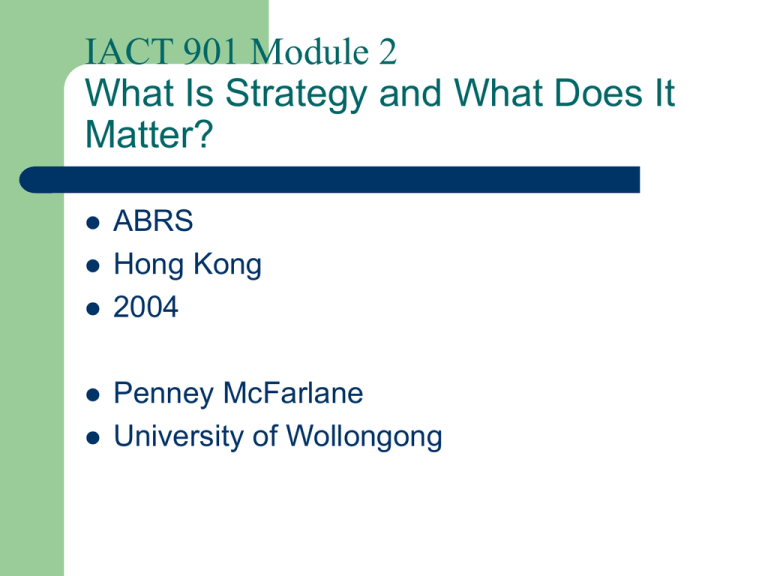
IACT 901 Module 2 What Is Strategy and What Does It Matter? ABRS Hong Kong 2004 Penney McFarlane University of Wollongong Four Basic Conceptions of Strategy Rational – Classical Fatalistic – Evolutionary (law of the jungle) Pragmatic - Pessimistic Relativist - Systematic Four Generic Approaches to Strategy Rational - Classical. Oldest & still most influential. Notions of strategy informed by the economics of 18th century Scotland. Assumptions about strategic implementation appeal back to the militaristic ideals of ancient Greece. Classical Approach Cont. Relies on rational planning methods Good planning is what it takes to master internal & external environs Rational analysis & objective decisions make the difference between long-run success & failure Evolutionary Draws on the fatalistic metaphor of biological evolution Substitutes the discipline of the market for the law of the jungle Environment is too unpredictable to anticipate effectively Businesses are like the species of biological evolution Evolutionary Approach Cont. Competitive processes ruthlessly select out the fittest for survival. It is the market, not managers that makes the important choices. All managers can do is ensure that they fit as efficiently as possible to the environmental demands of the day. Pragmatic (Pessimistic) Foundations laid by American Carnegie school (Cyert, March, Simon). Extended by Mintzberg (1978, 1987) and Pettigrew (1973, 1985). Emphasises the imperfect nature of all human life. Pragmatically accommodating strategy to the fallible processes of both organisations & markets. Pessimistic Approach Cont. Long-range planning is largely futile Less pessimistic about the fate of businesses that do not show optimised environmental fit Processes are rarely perfect enough for either classical or evolutionary approaches People are too different in their interests, limited in understanding, wandering in attention & careless in actions to unite around & then carry out a perfectly calculated plan Systemic - Relativistic Regards strategy as inescapably linked to the cultures & powers of the social systems in which it takes place Decision-makers are not simply detached, calculating individuals interacting in purely economic transactions, but people rooted deeply in densely interwoven social systems (Granovetter’s 1985 social embeddedness notion) Systemic Approach Cont. Strategy does matter, but not quite in the sense of classicalist approach More pessimistic approach to people’s capacity to conceive & carry out rational plans of action However, more optimistic about people’s ability to define their strategies in defiance of market forces Proposes that the objectives & practices of strategy depend on the particular social system in which strategymaking takes place Deviate from profit-maximising norm deliberately Differences Classical & evolutionary approaches see profit maximisation as natural outcome of strategymaking. Systemic & Processural sees other possible outcomes as well as just profit. Whittington (1993) "The processual view of strategy is an unglamorous one; Hands get dirty, steps are small and there are few bold lunges into the unknown". In the processual view, strategy stresses simultaneously: patience, experience, internal competencies, constant learning and future prospects. Strategies for Change - Growth Strategies Innovation According to Braun, head of technology strategy at Siemens competition today is increasing about quality & novelty rather than price. As the pace of product change accelerates the capacity manage successful innovation becomes a critical source of competitive advantage. Innovation Strategy Cont. To be effective innovators organisations should be constantly scanning the horizons for new opportunities to satisfy customers. To innovate well the entire organisation must be viewed as a customer-creating & satisfying entity. Diversification, Integration & Takeovers Only in 20th century, especially the post-war period that today’s highly diversified conglomerates have arisen Eg. Gm’s manufacture of M-16 rifles for Vietnam This means that you would combine widely different kinds of businesses under single ownership. Strategy for Change Cont. Internationalisation World economy steadily internationalising Concept of the TNC emerging Facilitated by networking technologies such as the internet Why are firms globalising their operations? Managing Strategy Strategy implementation Organising strategy Getting strategy to change Managing Strategy Cont. Strategy & Structure Problem for early diversifies was not strategy but organisation structure The ‘co-ordination costs’ of managing widely different businesses can grossly exceed benefits of diversification Requires move from centralised functional structures to multi-divisional structures to make diversification strategies pay However, slow & difficult in practice Managing Strategy Cont. Strategic Change Turnaround strategies need to be adopted in times of business decline Impacted by environmental change Need to achieve optimal fit of strategy to existing environmental conditions However, can successfully coerce change by clever manipulation of market pressures Often attributed to simple failure to recognise the demands on the organisation Impacted by ‘resistance to change’ Managing Strategy Cont. Managerial Consequences For every manager the strategy-making process starts with a fundamental strategic choice Theoretical picture of human activity and environment which best fits with his/her view of the world Real understanding comes from business understanding and experience What are some of the implications of poor strategy development, bad fit and management? Summary 1. What is strategy? 2. What are the four generic approaches to strategy? 3. How do you manage Strategy? 4. What should managers consider when undertaking a new strategy? Next Module: Strategic Thinking For IT- Part1


